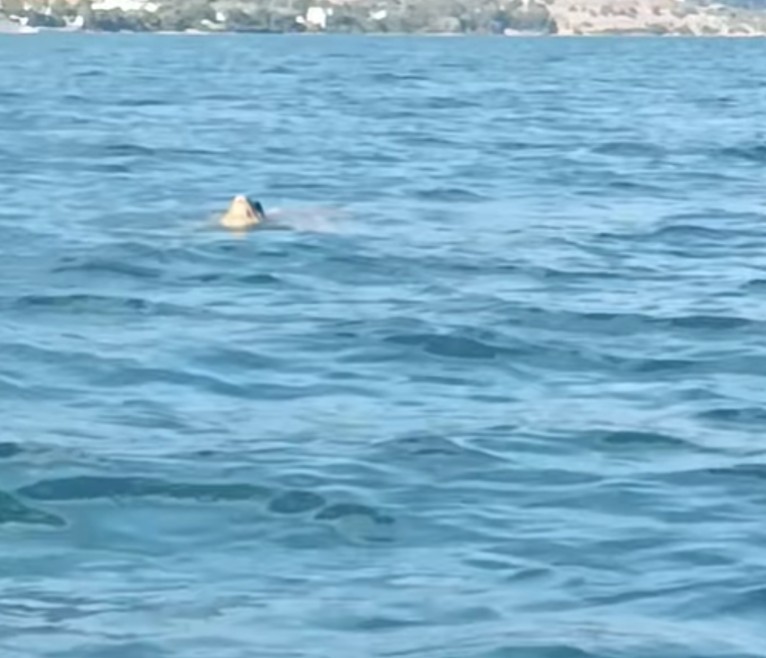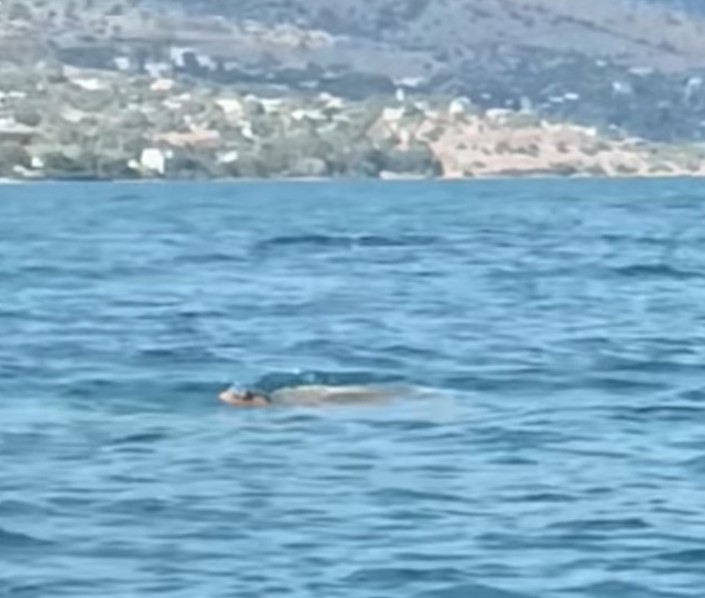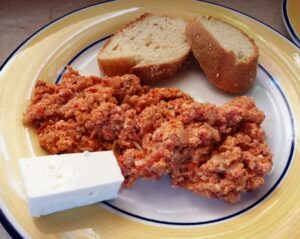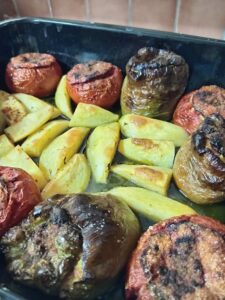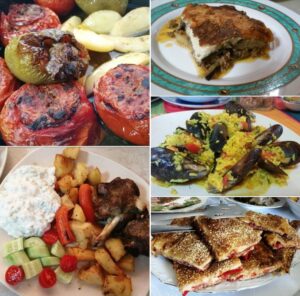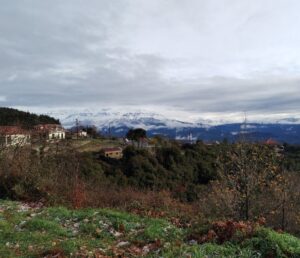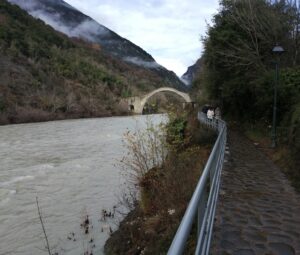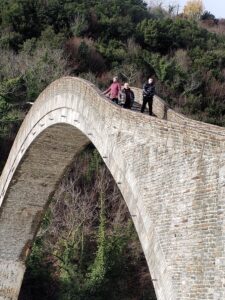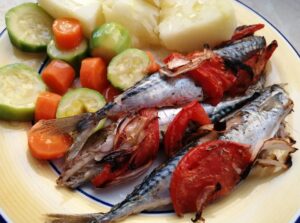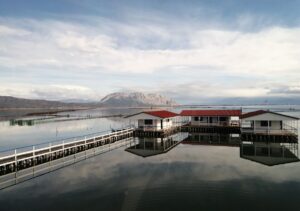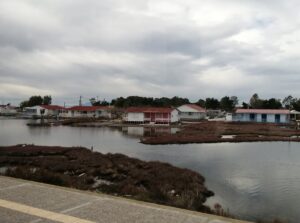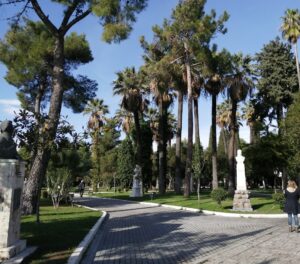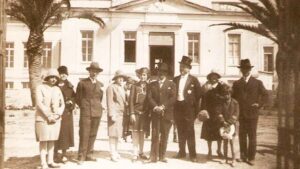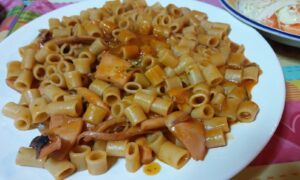
I was spooked in the water by a sea turtle ! (but, in my defense, it was huge!)
If you’ve been following me for a while you must know that I live in the small seaside town of Nea Peramos (near Athens).
Our local beaches. and especially the popular one that I swim in, are graced by sea turtles. I have repeatedly seen two together, but other locals say they have seen a whole family floating together.
In the recent years, we have been spotting a seal too. One day, it floated right past my husband and me in the deep waters. By the time we’d recovered from the shock it had swum away.
The seal has long disappeared from our area, but the sea turtles are still here. I see them on most days, far in the deep waters, mostly.
Their heads are so big they are easily spotted from afar.
The other day, one of them, a huge one, was splashing by a buoy in the deep water. That kept on for whole minutes. It was quite a show, and I seemed to be the only one who had noticed it.
I guess it’s because I always look out for them. That day, I could see its giant head and its whole fin as it splashed about, looking like it was having fun or hunting for something by the buoy.
And then, another morning, I had the shock of my life. I did a deep dive in fairly shallow waters, and as soon as I came out, about four-five meters away from me, I saw a huge sea turtle staring at me, its head fully out of the water. I froze. It had big black round eyes like buttons, and a green head covered with scales. Of course, I panicked 😨 and swum swiftly to the shallows.
As I neared four elderly women, I told them I just saw the turtle. Soon, a bunch of people gathered there, all of them looking out to sea to try and spot it.
By the time I got out to sit on the sand, I was laughing. They were all looking at a cormoran in the deep water (we have loads in the marshes of our area and they come over all the time to hunt in the sea).
The cormoran, as you probably know, has a long and thin neck, much like a swan’s, while the sea turtle has a huge, almost ball-like neck as seen from afar.
And yet, the locals were looking at the cormoran and going: “Oh! Look! It’s the sea turtle! Oh, how cute!”
Bless them, they couldn’t tell the difference. The funniest thing, though, was that the sea turtle was just to the left of them at the time, a fairly short distance away, but they never saw it. They totally missed it. They were focusing on the cormoran in the far distance instead.
This is what real-life comedy is made of, surely. I know I tittered as I watched the sea turtle swim near them totally unnoticed and couldn’t stop 😅
I was pleased to find these photographs online, taken by a local lady, who spotted the turtle while kayaking in the deep waters. These are the only photos I have of the turtle, but hopefully, more will follow. Just look at the size of that head. No wonder I panicked! 😛
Who enjoys cooking when it’s scorching hot?
I certainly don’t! This special, fried eggs recipe I am sharing today is my late Grandmother Antigoni’s. You will find many variations of it online with the names ‘kagianas’ and ‘strapatsada.’
Back in the 1980s, when I used to spend three months every summer on Corfu, Granny used to serve this often for lunch. She used ripe beef tomatoes and lashings of olive oil.
The sauce was divine and ample, begging for pieces of bread to be dunked in it. I remember feeling amazed every time. How could something made from just a couple of basic ingredients taste so heavenly?
I kept asking my granny to fess up, convinced she kept a special ingredient as a secret, but every time, she assured me she did not.
These days, I use much less oil than Granny did, seeing that when she treated me to that meal I was a youngster, but I am getting long in the tooth now, LOL. Still, despite the fact I serve it rather dry on the plate now, it still has the same heavenly taste.
Following Granny’s advice, I only make it with summer tomatoes. Try it! Just make sure to serve it with fresh, crusty bread. It makes all the difference. Yum!
GET THE RECIPE
My new, enhanced Gemista
Speaking of summer recipes, I had to squeeze in this one since I recently updated it on my blog.
I made a couple of changes that enhanced the meal, including the temperature it cooks on.
Also, I now add half a teaspoon of turmeric in the bowl that contains the raw rice, tomato, and herbs mix. This enriches the taste further, not to mention giving the potatoes this mouthwatering, yellow tint.
So, what do you think? You’re welcome to get the recipe and dine like a Greek!🍴
This meal is perfect for a summer lunch or dinner. It’s equally delicious served cold, so makes for great picnic food on the beach 🏖️
GET THE RECIPE
And don’t forget the tzatziki! 😘
Sharing is caring! Here’s a ready tweet for you to spread some love:
Interested in travel, food and books from Greece? Here's a blog you will love! #Greek #blogger #writer Share on X
3 FREE books for you! Sign up below to receive them instantly!
New! Clean Christmas romance. Two broken hearts. One magical holiday. A Santorini farm where anything can happen.
Check it out on Amazon Read a FREE sample!

